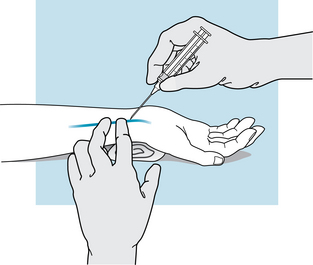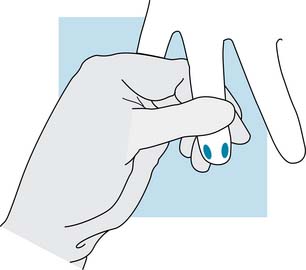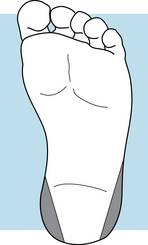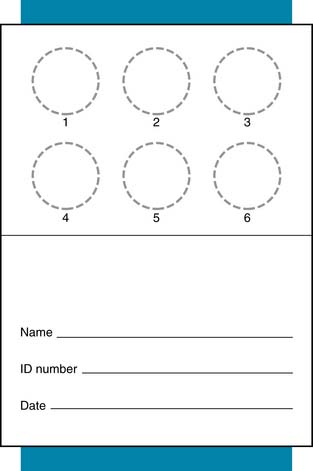Chapter 2 Specimen collection procedures
Blood collection procedures
Arterial puncture
Basics the nurse needs to know
Before an arterial puncture of the radial artery is carried out, the Allen test is performed to verify the presence of collateral circulation to the hand. If arterial occlusion of the radial artery occurs after arterial puncture, the presence of collateral circulation protects the hand from ischemic damage. The Allen test procedure is presented in the content on Arterial Blood Gases (p. 139).
Interfering factors
Nursing Care
Pretest
During the test
Posttest
Thrombus formation.
The nurse assesses for signs of an obstruction in the circulation distal to the puncture site. This may include loss of a distal pulse when a brachial or femoral puncture site is used. In addition, the distal parts, such as fingers, feel cool or cold and appear pale or cyanotic. The patient complains of pain in the area where there is loss of circulation.
Capillary puncture
Also called: Finger-stick; Heel-stick
Basics the nurse needs to know
Site of collection
The available sites for collection of capillary blood are the finger and heel. The finger is often used for adults or older children. The locations most often used are the distal tips of the third and fourth fingers, slightly to the side (Figure 4). Few calluses are located on the sides of the fingers, and the lancet can puncture the skin more easily. The frontal tips or pads of the fingers are not used because many nerve endings are located there, and the puncture would be more painful.
The heel is used for premature infants, neonates, infants, and small children and for special cases, such as patients with thermal injury. With the heelstick technique, the medial or lateral plantar surface of the heel is used (Figure 5). The central area of the plantar surface of the foot is never used. There is a risk of damage to the calcaneus bone, Achilles tendon, or other tendons, nerves, and cartilage that are located in the central area of the foot.
The heelstick method is preferred for sampling blood in the premature baby and infant. It is technically easier to perform and avoids the significant complications that can occur with arterial or venous puncture. Some special considerations including noninvasive alternatives for monitoring must be made when a large number of heelstick punctures are needed. Each puncture is painful and stressful to the baby and the available tissue surface for the capillary punctures is very small. On average, the premature infant experiences 10 painful procedures per day (Berde & Stevens, 2009). The premature infant may weigh as little as 500 g and the heels are small, with little depth to the tissue for the many punctures and tests that are needed. Additionally, blood flow is often inadequate, and two or three punctures may be needed to obtain the required amount.
How the test is done
A sterile lancet is used to collect capillary blood from a skin puncture site. The blood is blotted onto special filter paper (Figure 6) or collected in a narrow-diameter glass tube called a micropipette, microtube, or capillary tube.
Interfering factors
Nursing Care







